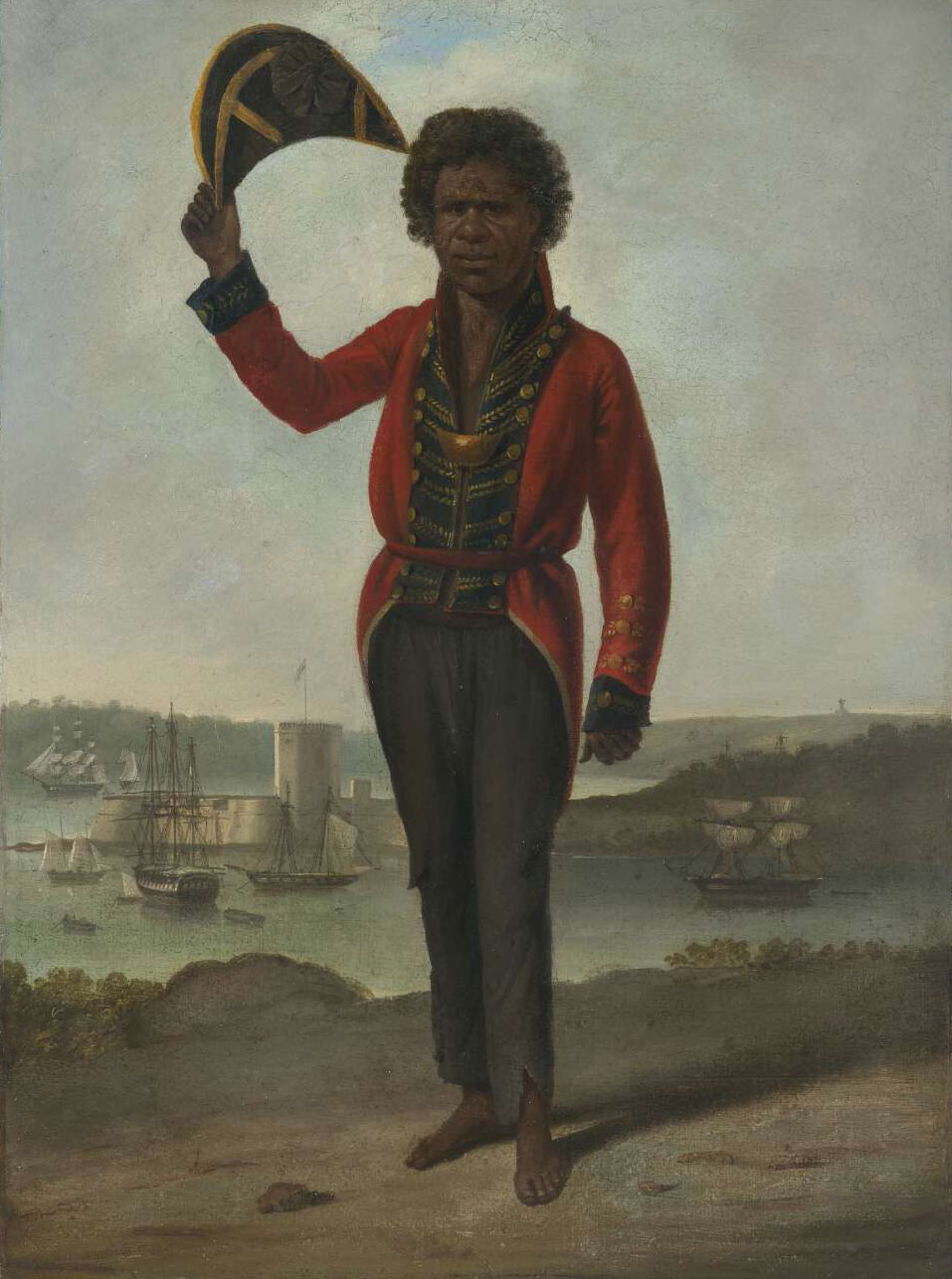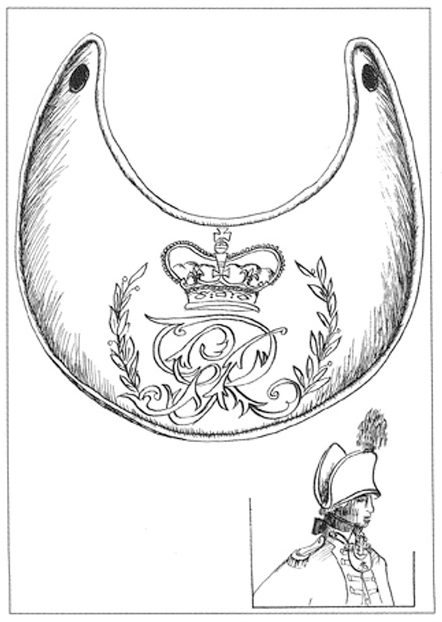Military gorgets

The gorget was originally part of the suit of armour worn by a medieval knight. The neck or, in French, gorge was protected by the neck plate gorget. Attached to the gorget was the breast plate cuirass. By the mid-17th century, the development of firearms had rendered armour almost useless and the suits were reduced to little more than the helmet, gorget and cuirass.
[1] At the end of the 17th century the gorget was the last remaining vestige of armour. It was worn only as a status symbol linking its wearer to nobility and the age of chivalry.
By 1682 the gorget was employed by companies of infantry to indicate the rank of its wearer. ‘Captains of foot and dragoons had a gilt gorget, the lieutenants one of sanguined (blued almost black) steel with gilt studs and the ensigns one of silver plate’.
[2] In 1695 gorgets ceased to indicate rank when ‘a regulation appeared stating that the grades of officers were to be distinguished by their weapons’. [3] After that time, gorgets were only worn to indicate that the wearer was on duty.
18th century gorgets
The British army developed its own form of the gorget. Throughout the 18th century the size continued to be reduced and the metal standardised to either gold or silver in accordance with the colour of the regimental lace of the officer. By the end of the 18th century it was determined that the patterns and colours of gorgets and ribbons should be standardised.
The infantry but not the foot guards were to have one pattern of gorget, ‘gilt with gold with the King’s Driver and Crown over it, engraved in the middle’. Gorgets were ‘to be worn with a ribbon and tuft or rosette at each end, of the colour of the facings of the Regiment or Corps, excepting those which are faced with black who are to wear them with a red ribbon ... the gorget to be fastened to the upper button and the lower part of it not to come below the sixth button’.
19th century gorgets
[4] Regiments with badges or other honours also engraved these on the gorget. [5] By the 19th century the average size of gorgets was 76.2mm across [6] and they were fastened with rosettes and ribbons through their horns to the collar buttons or to the top buttons of the lapels. Gorgets were not usually worn by cavalry or officers of the rifle corps and light infantry as they were an irritation to people who needed to move rapidly.

Gorgets were abolished by decree of King William IV in 1830. However, they were permitted to be worn by officers in England up to Christmas 1831 and by those abroad until 1832. [7] Gorget patches, originally the patch of colour under the buttons from which the gorgets were suspended, were retained as part of officers’ dress and are still apparent on some army uniforms.
Military gorgets in Australia
In Australia gorgets were first worn by officers of the marine infantry. The gorget of the marines was made of silver, decorated with a crown, Royal Cypher and an anchor and was suspended around the neck by a ribbon. [8] Four companies of marines directed the First Fleet which arrived in New South Wales in January 1788.
The marines remained in charge of the colony from 1788 until 1792 when the New South Wales Corps began to replace them. A few marine officers remained attached to garrison regiments until 1824. [9] British soldiers were permanently stationed in Australia from 1788 to 1870 and most infantry officers wore gorgets as duty symbols until 1832. [10]
In our collection
Footnotes
[1] WE May, WY Carman and J Tanner, Badges and Insignia of the British Armed Services: the Royal Navy, the Army, the Flying Services, St Martin’s Press, New York, 1974, p. 126.
[2] Walton quoted by May et al, p. 128.
[3] May et al, p. 128.
[4] May et al, p. 128.
[5] May et al, p. 128.
[6] May et al, p. 129.
[7] RH Montague, Dress and Insignia of the British Army in Australia and New Zealand 1770–1870, Library of Australian History, Sydney, 1981, p. 11.
[8] Montague, p. 16.
[9] Montague, p. 19.
[10] Montague, p. 115.